Camille Claudel in 5 Sculptures
Camille Claudel was an outstanding 19th-century sculptress, a pupil and assistant to Auguste Rodin, and an artist suffering from mental problems. She...
Valeria Kumekina 24 July 2024
Suzanne de Court was a French artist who was active at the turn of the 16th and 17th centuries. She focused on the production of enamel pieces with narrative scenes. Little is known about her life, but she left a priceless collection of works that now belong to some of the greatest museums in Europe and the United States.
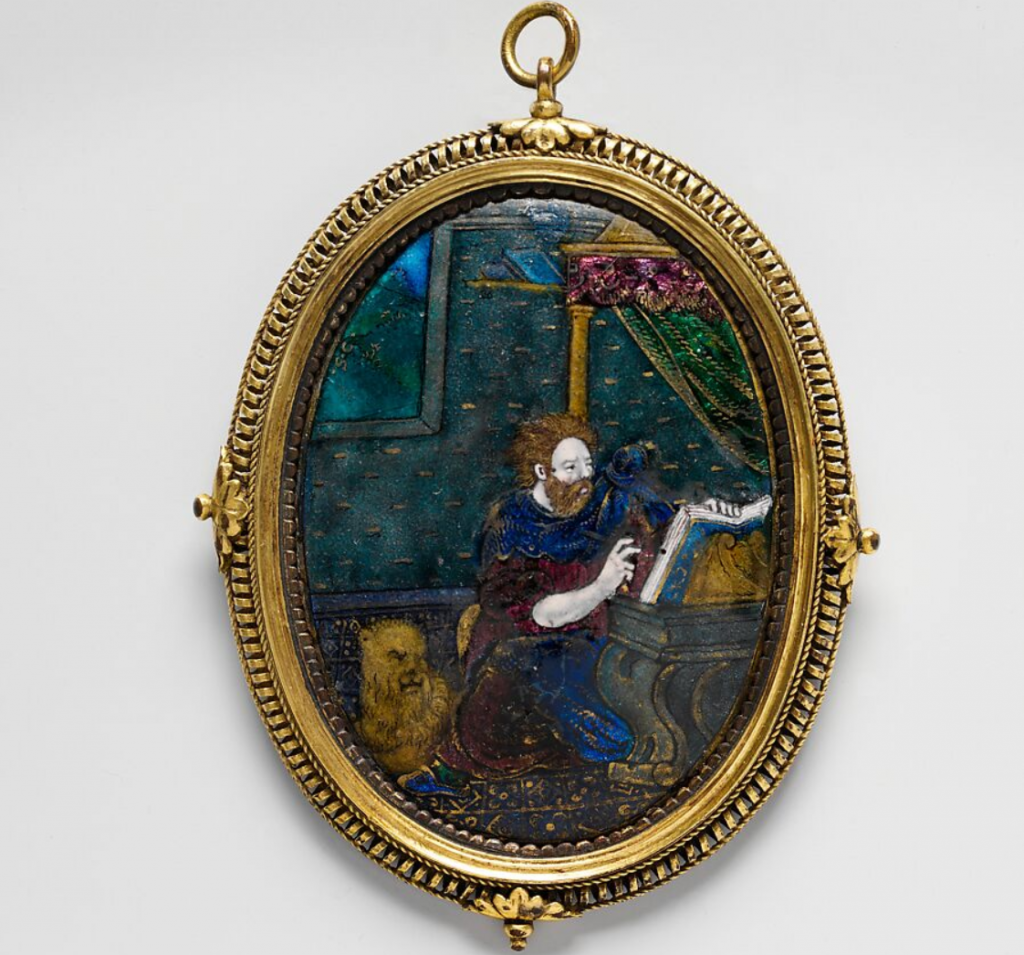
Suzanne de Court, St. Mark, late 16th or early 17th century, Metropolitan Museum of Art, New York, NY, USA.
Unfortunately, information about Suzanne de Court’s life and work is scarce but she certainly lived between the late 16th and early 17th centuries. Judging by her last name and profession, she could have been the daughter of Jean de Court (1530-1584), who owned a workshop of enamel pieces in Limoges, France. Another hypothesis is that she was related to the De Court family by marriage. According to the British Museum, the lack of records is due to her protestant faith (Huguenots) which kept her off Catholic baptismal registers. In any case, there are records of her name as the head of the workshop, as well as pieces signed with her name. So far, she is the only woman documented to have occupied that position.
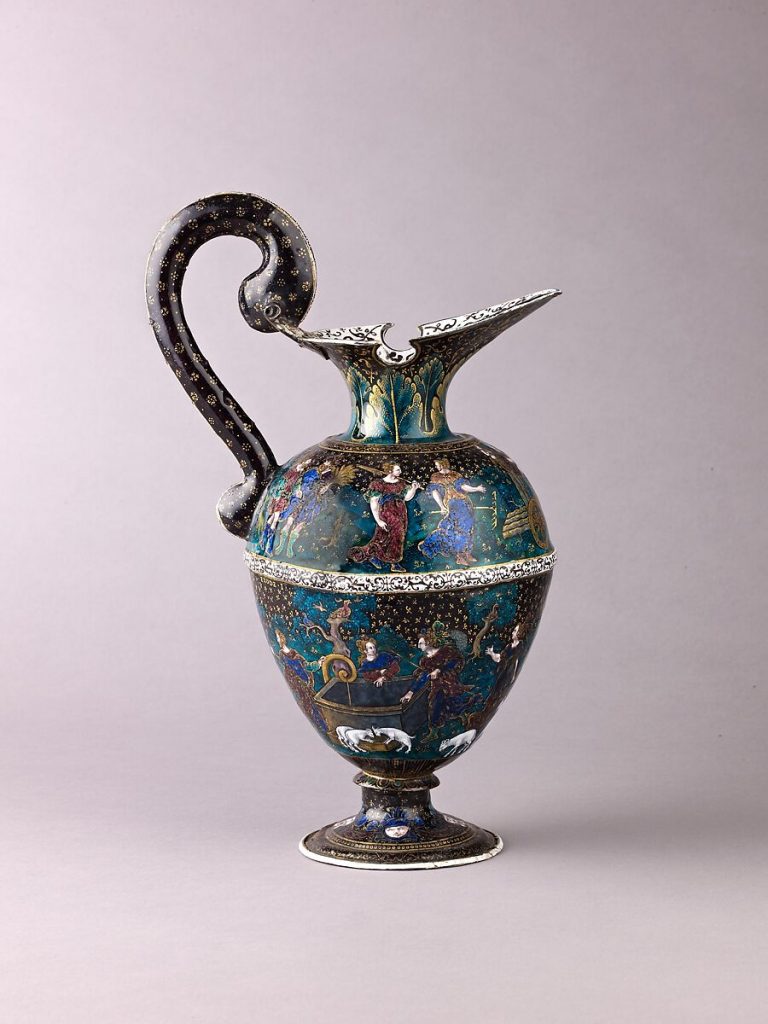
Suzanne de Court, Triumph of Ceres, late 16th–early 17th century, Metropolitan Museum of Art, New York, NY, USA.
Enamel is a glass-like material, fused with metal to create stunning works of art. The town of Limoges in Southwestern France was a historic center for the production of painted enamel, especially from the late 15th century until the late 17th century. Just like the example below, usually these pieces contain a blue, green, and red palette.
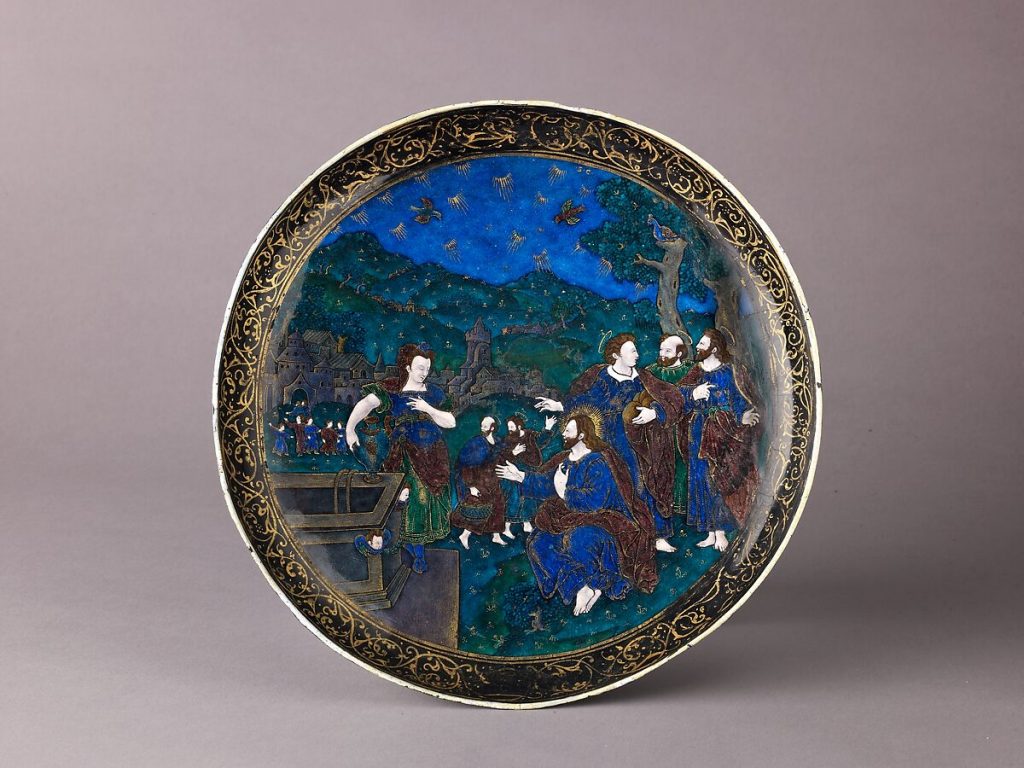
Suzanne de Court, Christ and the Woman of Samaria, late 16th or early 17th century, Metropolitan Museum of Art, New York, NY, USA.
During De Court’s lifetime, an interest grew in prints with mythological themes. This was reflected in the production of enamel pieces. For example, the mirror below depicts Minerva visiting the Muses on Mount Helicon.
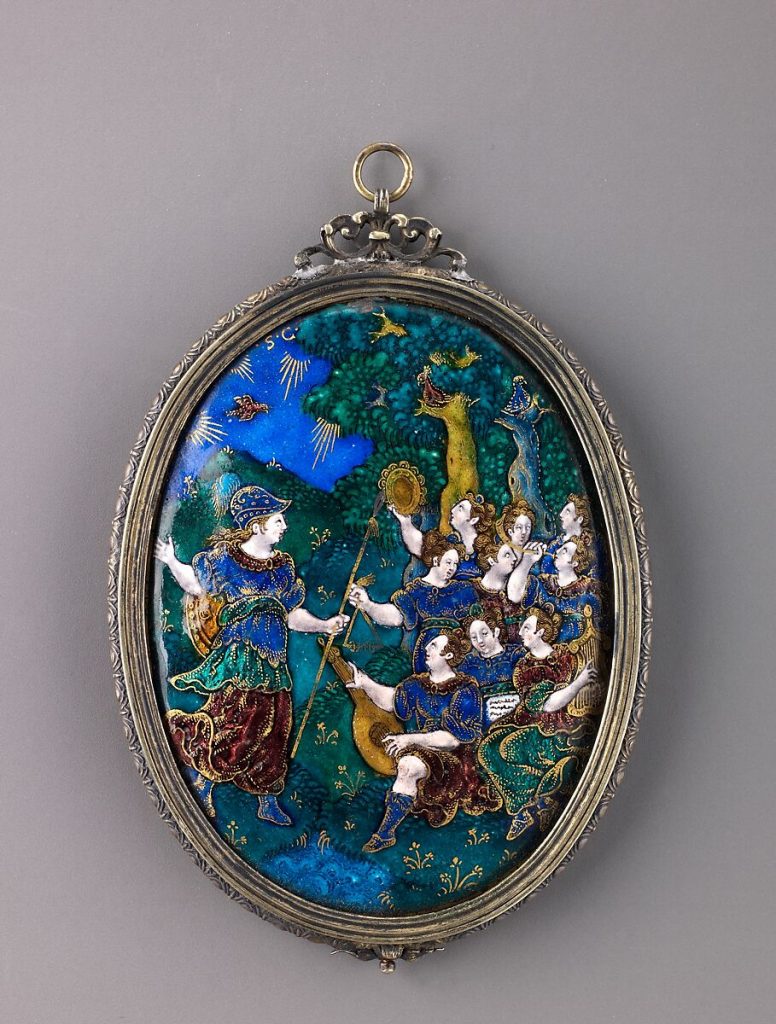
Suzanne de Court, Minerva Visits the Muses on Mount Helicon, early 17th century, Metropolitan Museum of Art, New York, NY, USA.
However, religious images were requested too. The object below illustrates the conversion of St. Paul described in Acts 26 as,
At midday, O king, I saw on the way a light from heaven, brighter than the sun, that shone around me and those who journeyed with me. And when we had all fallen to the ground, I heard a voice saying to me in the Hebrew language.
Acts 26: 13-14. ESV Study Bible.
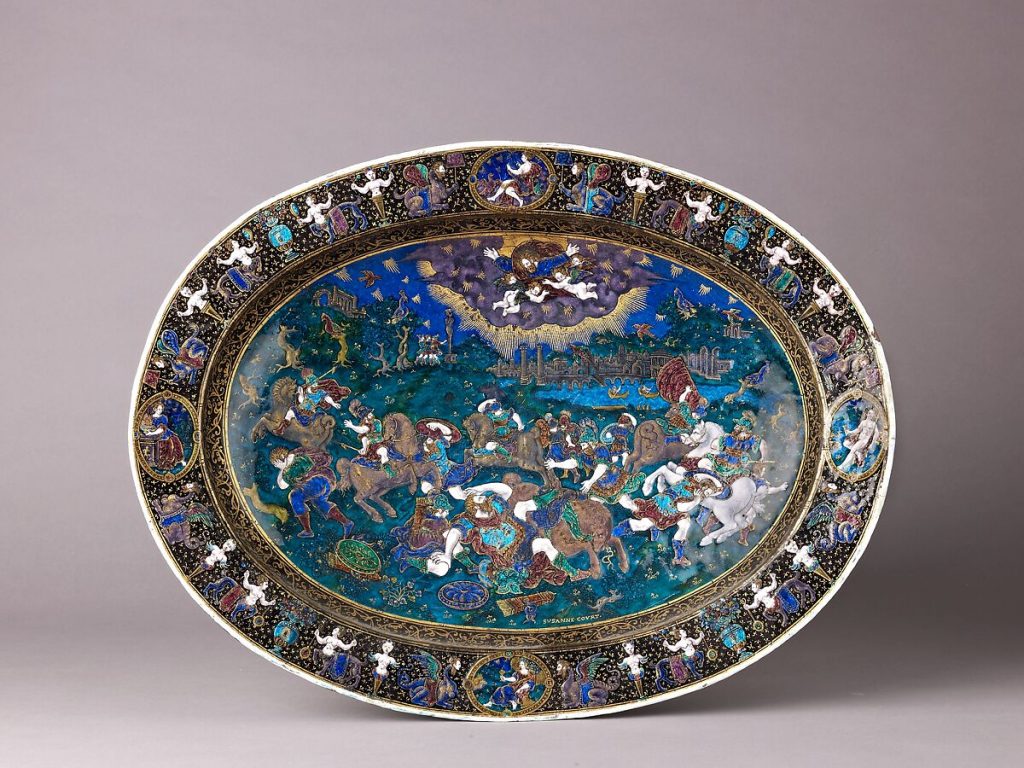
Suzanne de Court, Conversion of St. Paul, early 17th century, Metropolitan Museum of Art, New York, NY, USA.
Clearly, only wealthy patrons could have commissioned enamel works on objects. This watchcase below represents the myth of Vertumnus (Roman god of the seasons) and Pomona (nymph of apples and orchards). The scene shows Vertmus disguised as an old woman to gain access to Pomona’s orchard and seduce her.
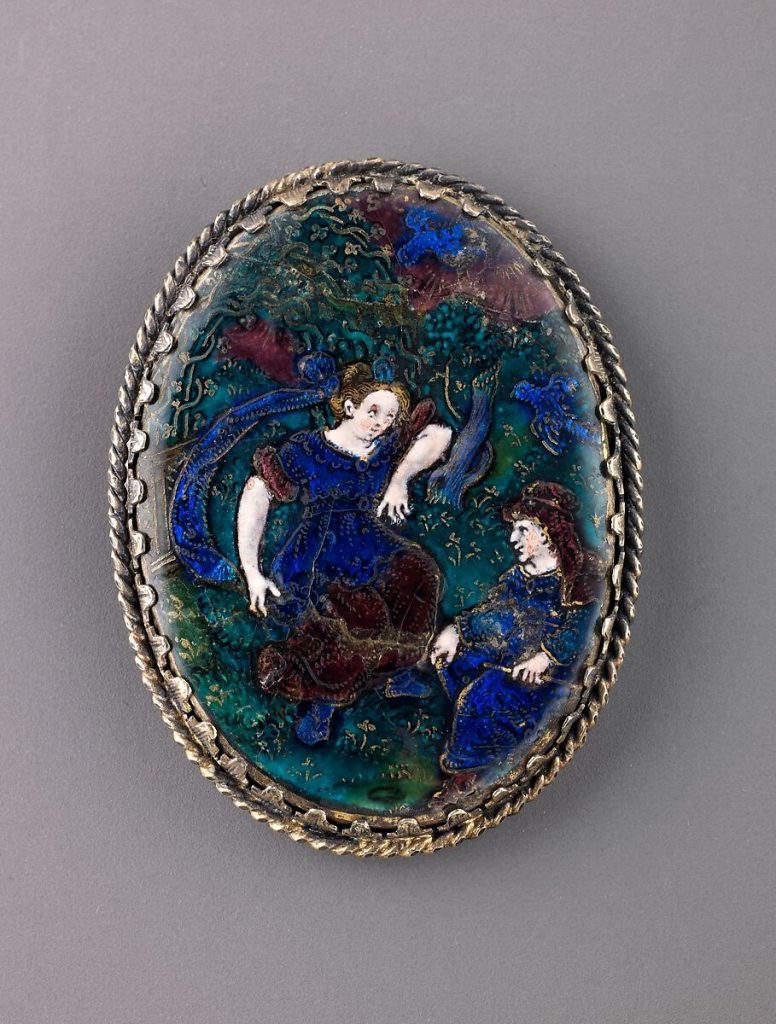
Suzanne de Court, watchcase cover: Pomona and Vertumnus, first quarter of 17th century, Metropolitan Museum of Art, New York, NY, USA.
Another example of what could have been the most basic and mundane object is this pair of saltcellars, lavishly decorated with enamel paintings depicting scenes from the myth of Orpheus.
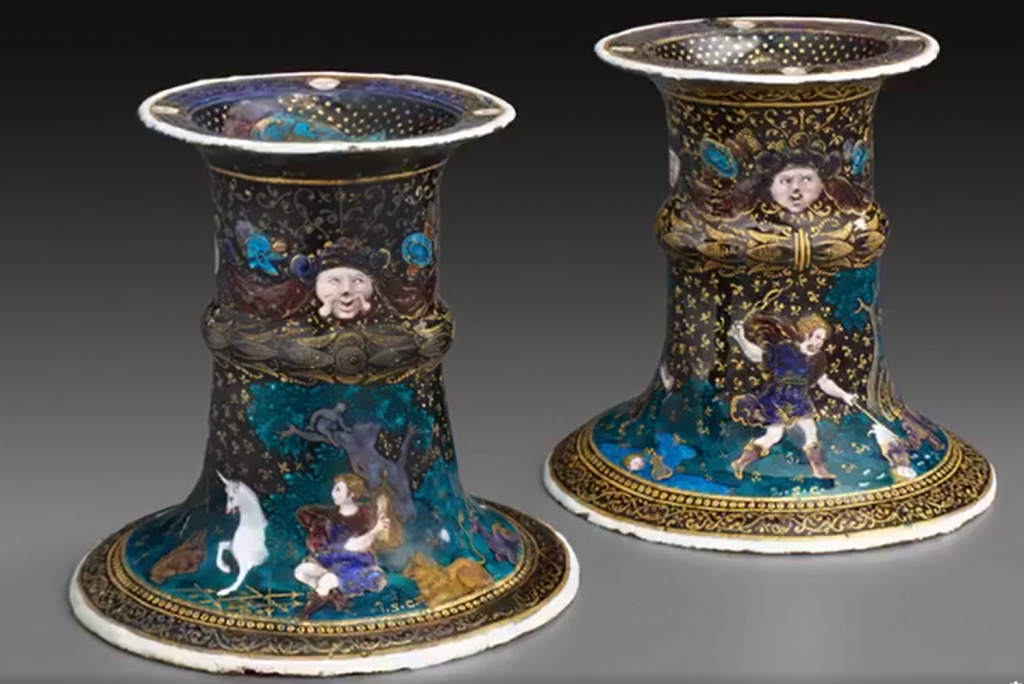
Suzanne de Court, pair of saltcellars, late 16th or early 17th century, The Frick Collection, New York, NY, USA.
One more example of De Court’s enamel works is this casket with scenes from Genesis. The base of these images was a series of prints by the goldsmith Étienne Delaune (1518-1583), whose engravings were highly valued.
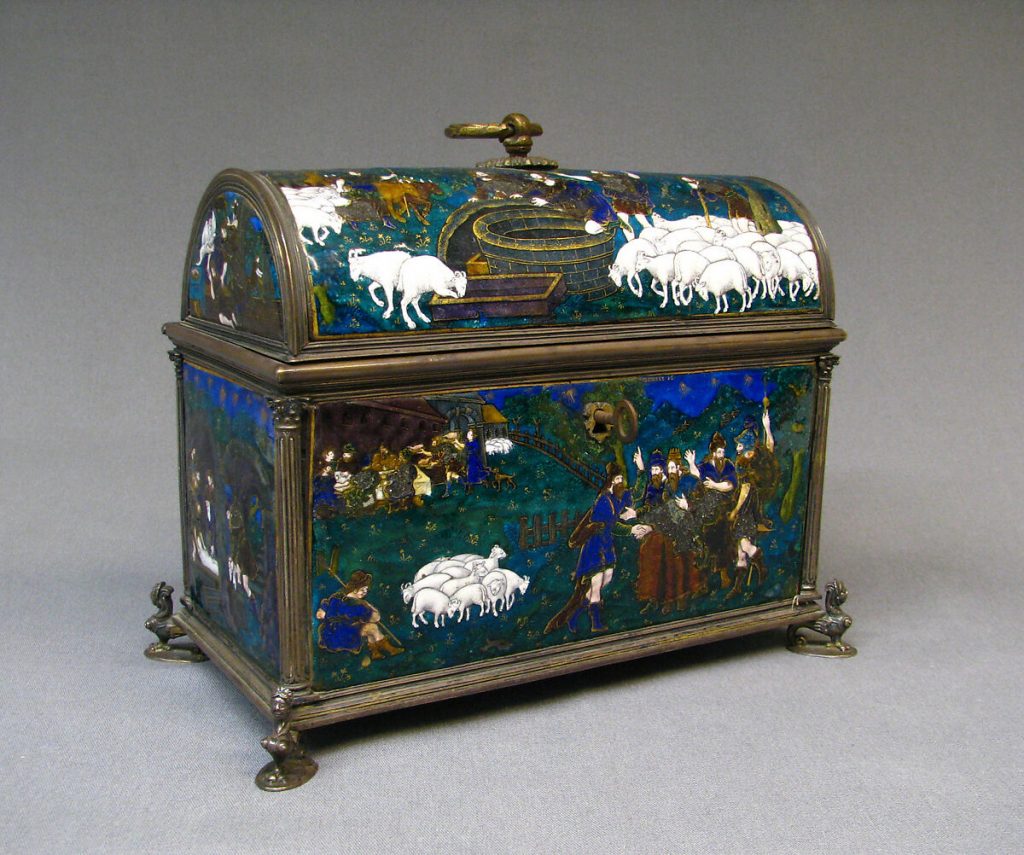
Suzanne de Court, Casket with scenes of Genesis, first quarter of 17th century, Metropolitan Museum of Art, New York, NY, USA.
It is still unknown today how involved De Court was in each piece. Her signature on the objects proves some kind of authorship, although it could also reflect her position as owner of the workshop. There are variations in it, too. Sometimes works feature her full name, meanwhile in other cases her initials were enough.
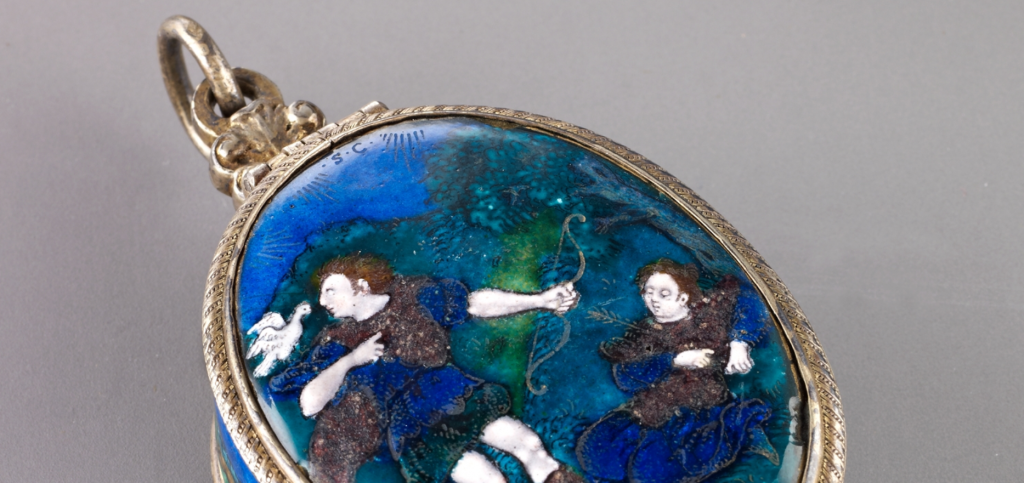
Suzanne de Court, watch, first quarter of 17th century, Metropolitan Museum of Art, New York, NY, USA.
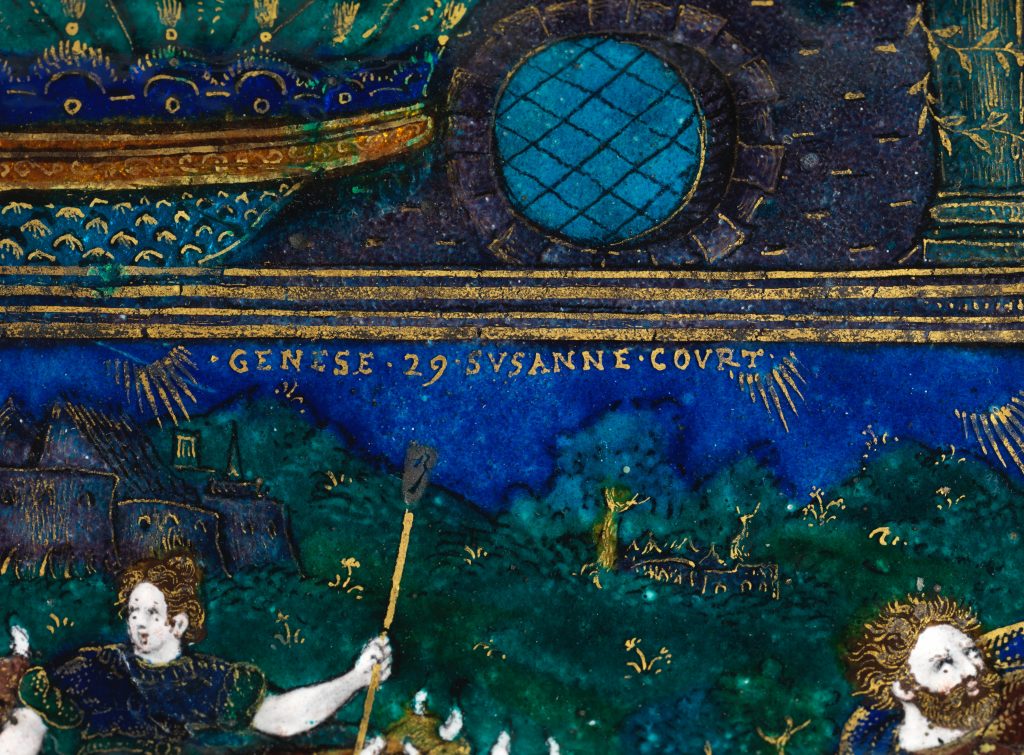
Suzanne de Court, Casket with scenes of Genesis, first quarter of 17th century, Metropolitan Museum of Art, New York, NY, USA.
In any case, Suzanne de Court was a unique female artist in the field of enamel paintings and her recognition today is well-deserved.
George Koelle: Suzanne de Court | What’s Her Story?, April 25, 2020, The Frick Collection, Youtube.
Ian Wardropper: Images of Antiquity in Limoges Enamels in the French Renaissance, April 2008, THE MET.
Susanne de Court, British Museum.
Suzanne de Court, Google Arts & Culture.
DailyArt Magazine needs your support. Every contribution, however big or small, is very valuable for our future. Thanks to it, we will be able to sustain and grow the Magazine. Thank you for your help!